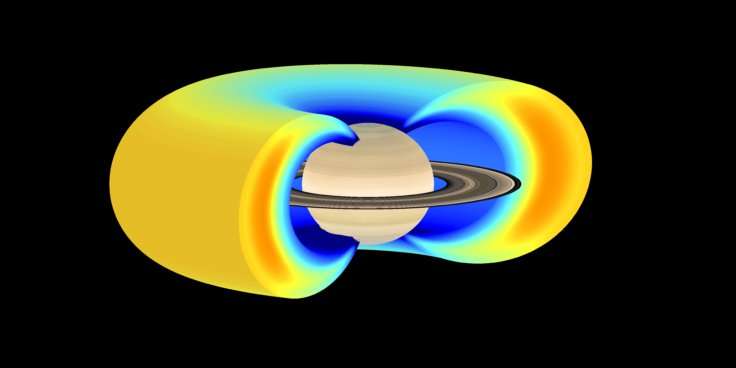One of the most baffling puzzles of astrophysics are radio bursts. They are extremely bright flashes of light with radio wavelengths – but last just milliseconds. See https://phys.org/print462533952.html … where it is revealed that scientists know very little about them. Dozens of theories have been proposed but none are set in stone, it would seem, but you would not know this without being told. What they are going to do is create a catalogue of the versions and then mark them up by the pros and cons. Other scientists are able to weigh in on the subject. The problem will be solved by international co-operation – or that is the hope.
At https://phys.org/print462705375.html … a new way to create Saturn's radiation belts has been aired in Nature Communications (November of 2018). Energetic charged particles are trapped in the magnetic field and form doughnut shaped zones near the planet (radiation belts), the equivalent of Van Allen belts around the Earth …
 … data from the Cassini mission seems to show that radial differences are not responsible for accelerating high energy particles. Instead, it is proposed, another form of plasma they call a Z mode wave, is involved. Emma Woodfield of the British Antarctic Survey says this is a different way to create a radiation belt. She added, people might think that planets are just chunks of rock travelling through empty space but this is not true. Each planet interacts with particles (and plasma) in space in a complex, unique, and exquisite way. Yuri Shprits of the German Research Centre for the Geosciences, says it is critical to understand extreme radiation environments on the outer planets. The team claims that electrons accelerating by Z mode waves is a more rapid process than energising electrons via radial diffusion (as far as Saturn is concerned).
… data from the Cassini mission seems to show that radial differences are not responsible for accelerating high energy particles. Instead, it is proposed, another form of plasma they call a Z mode wave, is involved. Emma Woodfield of the British Antarctic Survey says this is a different way to create a radiation belt. She added, people might think that planets are just chunks of rock travelling through empty space but this is not true. Each planet interacts with particles (and plasma) in space in a complex, unique, and exquisite way. Yuri Shprits of the German Research Centre for the Geosciences, says it is critical to understand extreme radiation environments on the outer planets. The team claims that electrons accelerating by Z mode waves is a more rapid process than energising electrons via radial diffusion (as far as Saturn is concerned).
